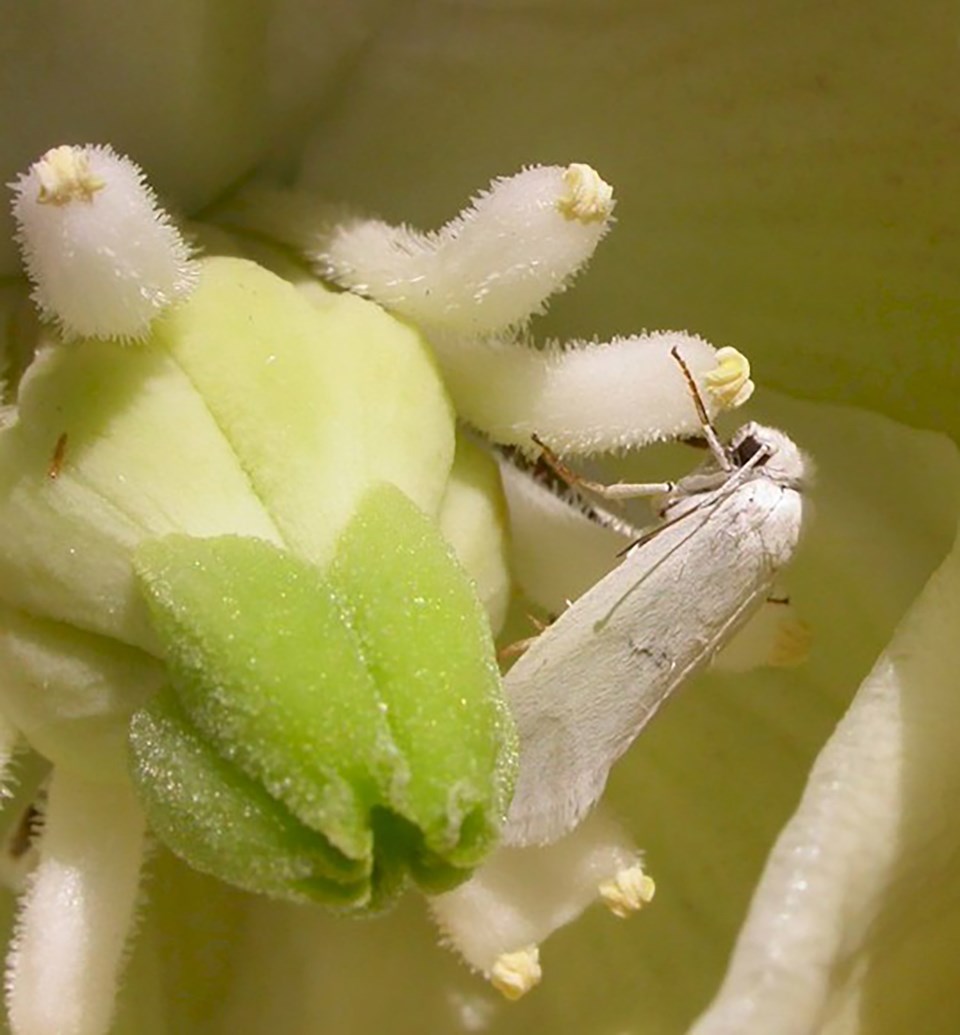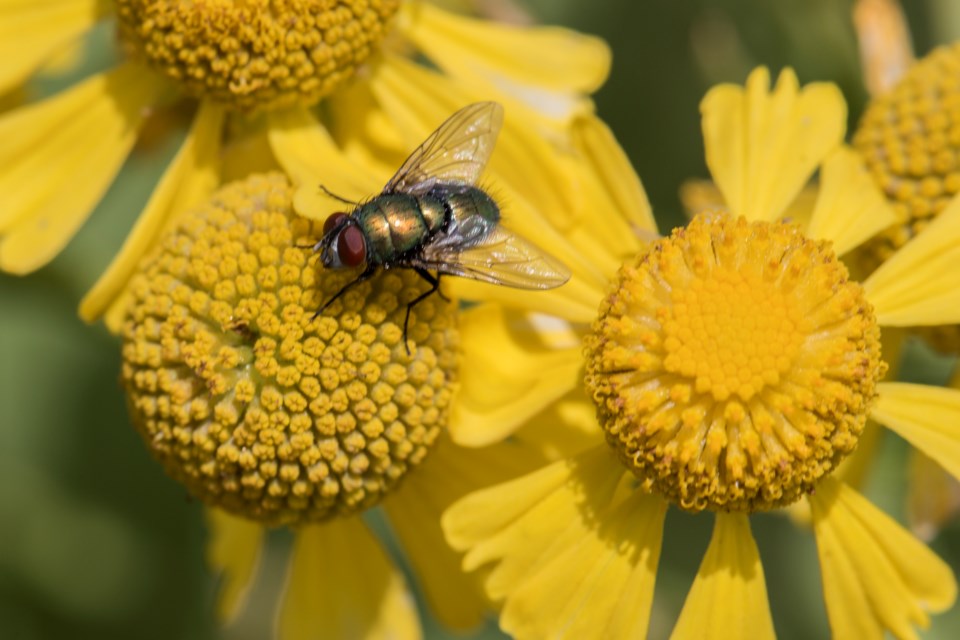As spring takes hold and flowers begin to bloom, a special kind of animal may appear in our gardens. These animals are called pollinators. Pollinators are creatures who pollinate plants, a process that occurs when insects, or other animals, move pollen between flowers, allowing the flower to reproduce and make seeds and fruits. Pollinators are important to humans and to our ecosystem. In fact, about a third of the food we eat is thanks to pollination! When thinking of pollinators, most of us think of butterflies, honeybees, and bumblebees, but there are so many more insects and animals that are just as important!
Moths, like butterflies, are attracted to flower nectar. As they use their long tongue (proboscis) to eat, pollen gets stuck to their legs and bodies which is transferred as the moths visit new plants, this means moths are important pollinators too. Many flowers such as evening primroses, datura, and four o’clock, bloom at night and need a nocturnal animal, like many moths, for pollination. Yucca moths (Proxidae), in fact, are the only animal that pollinates yucca plants. This means that without yucca moths, yucca plants would not survive and vice versa. And if yucca plants were to die off, yucca moths would lose their sole source of food. Although most moths are nocturnal, some are diurnal, which means they pollinate throughout the day. The Rocky Mountain clearwing (Hemaris thetis) and the snowberry clearwing (Hemaris diffinis) are two beautifully unique pollinating moths. These moths are relatively large with thick, fuzzy bodies and lack scales in the center of their wings giving them the “clearwing” look.

Beetles are also often overlooked; however, they not only make up the largest insect order (Coleoptera), but many are important pollinators! Beetles are attracted to spicy, rotten, and fermented odors that many other insects such as butterflies and bees may not be. Therefore, they are the sole pollinators of plants with those unique odors such as spicebush and magnolias. Beetles, including the ornate checkered beetle (Trichodes ornatus), soldier beetles (Chauliognathus sp.) and flower beetles have hairier bodies allowing pollen to stick to them and move from flower to flower. Unlike other pollinators, beetles are not usually attracted to nectar but instead feed on flower petals, stems, and pollen. As a result, pollen will still attach to the beetles allowing for pollination.
Have you ever seen an insect flitting around the garden with wasps and bees, but it doesn’t quite look right? It could be a fly! Many flies such as hover flies and bee flies mimic the coloration and behaviors of bees and wasps. Hover flies are black and yellow striped but are harmless and cannot sting. These animals typically have larger compound eyes than wasps and bees and smoother bodies. In addition, they only have one set of wings compared to the two sets of wings in bees and wasps. Bee flies (Bombyllidae) are also like bees in size and shape, but are typically rounder, and less striped. Both bee flies and hoverflies feed on nectar and transfer pollen from flower to flower on their legs and bodies. One last fly of note that is a pollinator is a mosquito. Although female mosquitos bite and take blood, both males and females also feed on nectar!

Not all pollinators are insects, other animals can be pollinators too such as bats in North America. Ruffed lemurs in Madagascar pollinate fruit trees. Studies have also suggested that elephants in Sumatra pollinate Rafflesia (corpse plant), in an event called elephophily, in which pollen attaches to the elephant’s foot as they walk over the plant, spreading the pollen to other areas. Other unique animal pollinators are lizards, mice, and honey possums.
Pollinators come in all shapes and sizes, but each is just as important as the next, helping us enjoy the food we eat and the earth beneath our feet. So next time you are out in the garden, see if you can spot a pollinating moth, beetle, or fly in the act of pollination and treat them with the same awe and care as you would a beautiful butterfly!



